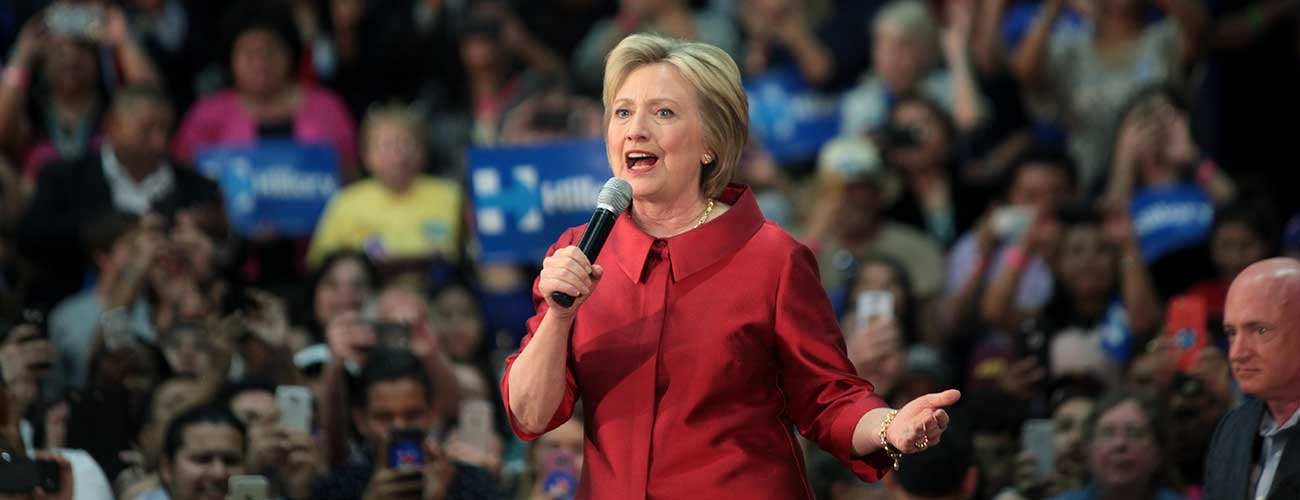Even before Hillary Clinton announced she was once again running for president, news organizations had pounced on the “Hillary beat” as if she were already a surefire candidate.
In mid-2013, The New York Times assigned politics reporter Amy Chozick to follow the former secretary of state. Early the following year, CNN asked White House correspondent Brianna Keilar to serve as the lead reporter on Clinton and the Democratic field. And 10 months ago, Anne Gearan of The Washington Post also joined the group ahead of the campaign announcement.
The press corps grew huge. But what may be more interesting is that for the first time ever a candidate’s reporter detail is mostly—let alone almost entirely—female. From BuzzFeed’s Ruby Cramer to NBC’s Andrea Mitchell, women from nearly 20 national media outlets form a collective of print, digital, radio, and television journalists covering Clinton.
“There are more women covering her this time around than I’ve ever seen covering any candidate at one time,” Gearan says.
The emergence of a largely female press corps could be the result of three trends: an increasing number of young women pursuing journalism; a desire to report about newsworthy issues such as gender and culture; and news organizations using a relatable voice for new millennial female readers. According to the Women’s Media Center, women produced just 34.7 percent of US political news last year. Yet both male and female reporters have seen a rise in the number of women covering the campaign trail now than in 2008.
“The decline in newspaper readership and the increase in digital technology has meant that a new generation of reporters is coming up through the ranks, and that new generation of reporters is most likely to have a greater demographic representation of women,” says Brigid Harrison, professor of political science and law at Montclair State University.
Although some reporters like CBS’ Hannah Fraser-Chanpong are new to the beat, others got the job from past positions, such as Chozick, who wrote about the Clintons for The Wall Street Journal, and Keilar, whose reporting at the White House effortlessly transitioned into her current post. Gearan also was an obvious choice since she’d already covered Clinton at the State Department.
When Clinton broke her silence from the media last summer, she first opened up to female reporters like Univision’s Maria Elena Salinas and The Des Moines Register’s Jennifer Jacobs. Her move could simply have been a matter of circumstance–after all, most of the journalists who had been following her were women. However, there was also speculation that Clinton was targeting female voters by bringing light to women’s issues, a key component of her campaign.
NPR’s Tamara Keith insists that there’s no difference between a man and a woman reporting on Clinton or any other candidate.
“I think this female-heavy press corps talks about all the same things presidential press corps talk about, which are airline miles, hotel points, and if we can get home at some point to do the laundry,” Keith says.
In an interview before the first Democratic debate, Clinton Communications Director Jennifer Palmieri said it was attention to Clinton’s potentially historic nomination, rather than campaign strategy, that led to more female journalists getting the scoop.
“I think it’s probably a mixture of both phenomena, more women in the business [and] maybe interest in covering who we hope to be the first woman president,” Palmieri told Politico.
That doesn’t necessarily mean better coverage for Clinton. Controversy over her use of a private email server at the State Department led to critical coverage in the news at the beginning of her campaign, and female journalists reported the scandal no differently than their male counterparts. This contrasts with media coverage of Clinton’s run in 2008, which was dominated by gender stereotypes and sexist remarks.
“I haven’t noticed a difference in how Clinton or the campaign treats female reporters,” says Anita Kumar, White House correspondent for McClatchy Newspapers. “I think her campaign’s relationship with the media has been strained in part because reporters are getting way less access than they would like, and because there have been so many stories written about her emails.”
Keith agrees, noting that Clinton looks at her press corps not as women reporters but simply reporters.
“I don’t think there is a sisterhood for Hillary Clinton,” Keith says. “If she realized that she had more women in her press corps, it would only be because she read an article about it.”
Samantha McDonald is a Columbia Journalism School student. Follow her on Twitter @samanthaanne_mc.

